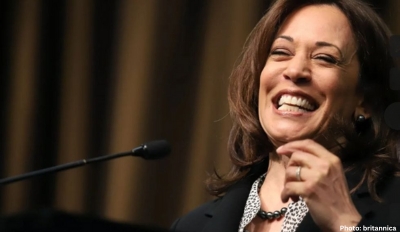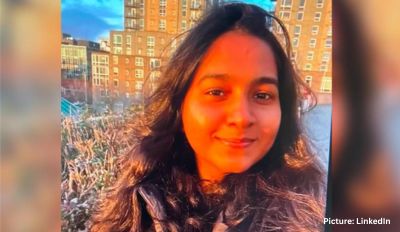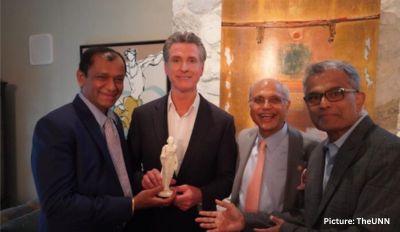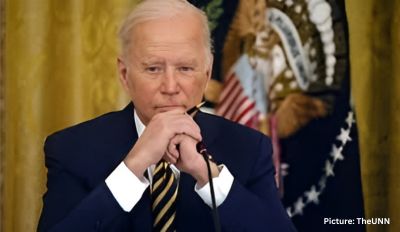Grigsby’s largely upbeat attitude about the future, combined with a world-weary realism that seems mature beyond her years, is echoed in the findings of a national Washington Post-Ipsos poll of teens ages 14 to 18. While still hopeful about what lies ahead, many teens do not view the current moment so favorably. Fifty-one percent say that now is a bad time to be growing up, compared with 31 percent who answered that way 16 years ago, in a poll of teens conducted by The Post, the Kaiser Family Foundation and Harvard University. Their parents are even more negative, with more than 6 in 10 saying it’s a bad time for teenagers to be growing up.
 These young Americans, who are coming of age amid a once-in-a-lifetime pandemic, political and social unrest, growing economic inequality and rising crime, are keenly aware of the country’s problems. Majorities view political divisions, racial discrimination, the cost of health care and gun violence as “major threats” to their generation, according to the new Post-Ipsos poll. Nearly half also rank climate change as a major threat. Some are already trying to make a difference. Heily DeJesus, who lives in Lebanon, Pa., said she dashed from her brother’s high school graduation to a Black Lives Matter protest, where they all took a knee for a selfie as her brother raised his fist in the air. “It felt great to know that we’re a part of making a change for the world,” she remembered. “Even if it’s a small town, we’re still making a change.” The survey of 1,349 teens was conducted online in May and June primarily through Ipsos’s randomly recruited panel of U.S. households. Overall results have a margin of error of plus or minus three percentage points, and the relatively large sample allows comparison of White, Black, Hispanic and Asian teens.
These young Americans, who are coming of age amid a once-in-a-lifetime pandemic, political and social unrest, growing economic inequality and rising crime, are keenly aware of the country’s problems. Majorities view political divisions, racial discrimination, the cost of health care and gun violence as “major threats” to their generation, according to the new Post-Ipsos poll. Nearly half also rank climate change as a major threat. Some are already trying to make a difference. Heily DeJesus, who lives in Lebanon, Pa., said she dashed from her brother’s high school graduation to a Black Lives Matter protest, where they all took a knee for a selfie as her brother raised his fist in the air. “It felt great to know that we’re a part of making a change for the world,” she remembered. “Even if it’s a small town, we’re still making a change.” The survey of 1,349 teens was conducted online in May and June primarily through Ipsos’s randomly recruited panel of U.S. households. Overall results have a margin of error of plus or minus three percentage points, and the relatively large sample allows comparison of White, Black, Hispanic and Asian teens.
These young people are part of what is likely the most diverse cohort in the nation’s history. New Census Bureau data shows that the country’s under-18 population is majority-minority for the first time, with White children making up 47.3 percent of that age group compared with 53.5 percent in 2010. Their childhoods have been marked by racial justice protests and a growing societal acceptance of LGBTQ people. Most also perceive significant discrimination against a wide range of groups in American society. Black and transgender people topped the list, with about 6 in 10 teens saying Black people are treated unfairly very or somewhat often and an almost equal share saying the same thing about transgender people. But even given such looming challenges, the optimism of teens runs through the poll findings, especially when it comes to what the future holds for their own lives.
Nine in 10 teens say they are very or fairly likely to achieve a good standard of living as an adult, while nearly half still believe their opportunities to succeed in life are better than their parents’ were. About 4 in 10 believe they are about the same, while fewer than 2 in 10 say their opportunities to succeed in life are worse. Vincent Bornhorst has a rosy view of his future. The 18-year-old, who just graduated from Thomas S. Wootton High School in Rockville, Md., is a freshman at Virginia Tech, majoring in computer science. Earning a college diploma is a top priority, he says, which puts him among the roughly 8 in 10 teens who describe this goal as important. He expects to have about the same opportunity to succeed as his mother, a physician, and his father, a stay-at-home dad. What he doesn’t anticipate: one day becoming rich or famous, especially since he thinks the latter would entail public speaking, which he hates. ‘Overall, even with the omnipresence of social media stars who make achieving celebrity and wealth look as easy as racking up TikTok likes, a significantly smaller percentage of teens today believe they will become rich.
About half think it’s very or fairly likely that they will be rich one day, compared with more than 6 in 10 in 2005. White teens like Bornhorst are among the least likely to expect to become wealthy – with 44 percent predicting they will likely become rich. That number rises slightly to 49 percent for Hispanic teens. By contrast, about three-quarters of Black teens and two-thirds of Asian teens believe they will be rich one day. (Presumably, the notion of the top 1 percent hasn’t quite sunk in yet.) Bornhorst is also among the more than 9 in 10 teens who say it is important to achieve career success and to have enough free time to do the things they want. Some might view the two goals as contradictory, but Bornhorst thinks one requires the other. “I view free time as important to being successful,” he said. “If you’re just working hard all the time 24/7, you’re fairly likely to tire out.” DeJesus experienced that tension firsthand. The high school senior held two jobs to make her car payments during the pandemic on top of hustling at school. “Working all the time was really rough on my mental health.”
In fact, she said, “the whole year was horrible.”
In all, 45 percent of teens say the worst pandemic in a century has had a negative impact on their mental health, while another 45 percent say it had no impact at all and 10 percent say it had a positive impact. Four in 10 teens also report that the spread of the coronavirus had a negative impact on their relationships with friends. About half of teens say pandemic hurt their academics; more say bonds with parents got better than worse Emily Guzman, a 17-year-old senior from New York City, said she fell out with a friend at the beginning of the pandemic, and the social distancing made it harder to reconcile. “One of my friends had to put us into a group chat, and we talked about it,” Guzman said. She said she and her friends communicated during their pandemic isolation via texting and FaceTime. “It was stressful,” she said. “We all went from seeing each other every day to a whole year without seeing them.” Owen Porter, a rising senior in Davis, W.Va., was among those who found a way to stay in touch through gaming — Call of Duty and Minecraft were two of his favorites — and watching movies together on Discord.
“We would stay up till like 2 in the morning watching ‘American Horror Story,’ ” Porter said.
A surprising silver lining: Nearly 4 in 10 teens say the pandemic has had a positive impact on their relationships with their parents, compared with about 1 in 10 who say it had a negative impact and roughly half who say it had no impact. For once, the whole family was at home instead of running off in different directions. There were long stretches of not much to do and more time to talk, some teens said. Steven Townley, a 10th-grader in Augusta, Ga., said his family bonded even more tightly during the pandemic. “I got to spend more time with them and I got to get closer with them,” he said. Even when all of them contracted covid-19 and isolated in their home “we made the best of it.” They all recovered, he said. School did not fare as well with the teens surveyed; about half said the pandemic had a negative impact on their academics. The technology was glitchy at times, remote learning invited slacking for some teens, while others thought teachers weren’t up to the task.
“It felt like we didn’t get enough material. It seemed to change how much they taught us,” said Abigail A., a high school student in North Dakota whose parents allowed her to speak on the condition of partial anonymity because they were concerned about her responses lingering on the Internet. DeJesus said she struggled but still managed to maintain her grades. Pandemic or not, DeJesus believes that if she keeps pushing, she will graduate from college and succeed in life. Her dream: to be a lawyer. “I feel like in the past a lot of people didn’t go to college, they stayed in their towns and said, ‘This is what I’m going to do for the rest of my life,’” said DeJesus, the Puerto Rican daughter of a mechanic who didn’t attend college and a stay-at-home mother who did. “A lot of people [my parents’ age] are struggling right now.” More than half of Hispanic teens like DeJesus, as well as similar majorities of Asian and Black teens, say it is “very important” to graduate from college, compared with about 4 in 10 White teens. The disparity is greater among lower-income households.
Teens who say graduating from college is very important are more likely to believe that the country’s best days are ahead of us, at 48 percent, compared with those who consider it less important, at 39 percent. Overall, a majority of teens — 56 percent — say they believe that the country’s best years are behind us, a shift from 2005, when roughly the same percentage said the country’s best years were still ahead of us. White teens are more apt to believe that the American glory days are gone.
Bornhorst believes life will only get better, largely due to technology and innovation, he said.“We are progressing quite a bit,” he said. “Technology will help us accomplish more things. People will have more spare time.” And yet Americans might be their own worst enemies — quite literally — when it comes to the country’s future, he said. “I feel like the U.S. has a lot of potential that we’re not using to the fullest,” he said. “We’re too divided politically and that is very much slowing down progress.” Bornhorst sees the country’s diversity as a competitive strength and, conversely, racial discrimination as a “major threat” to his generation, he said. His opinions are shared with a majority of his peers. About 6 in 10 teens say political divisions are a major threat to their generation. About the same share the view that racial discrimination as a major threat. The percentages differ widely between White teens and teens of other races and ethnicities. About 2 in 5 White teens say racial discrimination is a major threat, compared with more than 4 in 5 Black teens and more than two-thirds of Hispanic and Asian teens. Roughly 7 in 10 teens whose parents were not born in the United States perceive racial discrimination as a major threat.
Townley is struck by how quick some Americans are to judge — not only people of color but Whites, too, he said. “Some people do things they shouldn’t, and people see that and automatically think that everybody who looks like that person acts the same way. … It’s like judging a book by its cover,” said Townley, who is of Vietnamese descent and one of several children of color adopted by his White parents. Tha’keysha Murphy, an African American senior in Copperas Cove, Tex., believes that Whites are rarely treated unfairly, a view shared by 56 percent of all teens polled, including 43 percent of White teens and large majorities of minority teens. Murphy, 17, said she has noticed that’s particularly true at her school when punishment is meted out. She recalled a recent argument between a White student and an Asian student that turned into a physical fight. Although Murphy perceived that both students played an equal role, “the White person got off easier.”
About 1 in 5 teens say they have been treated unfairly over the past year due to their race and ethnicity. DeJesus had such an experience. She said she was speaking in Spanish with a family member on the phone while shopping at a local outlet mall when a White person screamed at her to “go back to my country,” she said. “It’s always the same thing,” DeJesus said. “They say our people should go back to our country, but I don’t think they know Puerto Rico is a U.S. territory.” DeJesus put her anti-racist views into action last year by joining the Black Lives Matter protest, among the 12 percent of teens who said they have attended a BLM rally. Sixty-one percent said they support the movement, according to the teen survey, about the same percentage of adults who said they did in a 2020 Washington Post-ABC News poll. Grigsby, the teen from rural Minnesota who describes her heritage as African American,
European, Jewish and Indigenous, said her consciousness was raised about racism long before Floyd’s murder. As a 10-year-old in her predominantly White elementary school, she said she was “bullied and called the n-word” and physically attacked by her classmates. Her family’s protests were ignored, Grigsby said, so they filed a discrimination complaint with the state Department of Human Rights in 2015, which ended with a settlement in 2018. “It definitely hardened my character and made me more resilient and aware,” said Grigsby, who in the wake of Floyd’s murder co-led a walkout at her school and formed an advocacy group that, among other goals, seeks to ensure the hiring of more teachers of color. Abigail, who is White, believes that the discrimination can work both ways. It seems that barely a few days go by, she said, before she reads news that a member of a minority group has accused a White person of racism. She blames the media for creating division by too often pointing out the racial backgrounds of alleged victims and perpetrators.
She used to think more like a Democrat, she said, but gradually has come to adopt the perspective of her father, who is conservative. Perhaps not surprising for a generation that is particularly close to their elders, teens frequently echo their parents’ political beliefs. Two-thirds of teens whose parents lean toward the Democratic Party also say they lean that way, while about 6 in 10 teens whose parents lean Republican say they also lean Republican. Just 3 percent of teens say they lean toward the rival political party of their parents. Teens’ political leanings also affected their responses. For example, 72 percent of teens who said they were closer to the Democratic Party perceived climate change as a major threat, while only 17 percent of Republican-leaning teens did. “God creates the climate,” said Townley, who like his Reformed Baptist parents considers himself conservative. Teens’ political beliefs heavily influence what they think of President Biden and former president Donald Trump. A large majority of Democratic-leaning teens say Biden is doing a good job and that Trump did a bad job, and a large majority of Republican-leaning teens say the opposite.
Trump “built the economy better and made sure we had our vaccine so that people could make the decision about whether to take it,” Abigail said. Meanwhile, Biden is handling immigration poorly, she said. “He stopped building the wall and now a lot of people are getting in.” But Abigail does not believe such differences of opinion need to lead to political divisions, which she considers a “major threat” to her generation, a view shared by roughly two-thirds of both Republican and Democratic-leaning teens. “I know that people say there is a big gap between the two,” she said, “but I feel like there could be more common ground.” Grigsby sees a third path, along with roughly half of teens who say they do not lean toward either major political party. “Democrats are a lot of talk and don’t do very much,” said Grigsby, who leans socialist like her mother. “The Republicans, they do things, but they do things that harm the culture and marginalized people.” To Grigsby, Biden is best defined by what he’s not: Trump.
A self-described news junkie, Grigsby quickly rattled off what she perceives as Trump’s transgressions, from his handling of the pandemic — “He lied about it and called it a hoax” — to his attitudes on race. “He said ‘when the looting starts, the shooting starts.’ But if I understand correctly, he did not denounce what Kyle Rittenhouse did in Kenosha, Wisconsin.” And, finally: “He incited an insurrection and endangered his own vice president.” As she watched Trump’s supporters storm the Capitol on Jan. 6, Grigsby said, “I just remember thinking that this whole country is in shambles.” She worried that perhaps the racism of the past would become a fixture in the future. In the months since, the teen has come to think of the forces of white supremacy and the countervailing power of anti-racism as two magnets held in suspension, neither overtaking the other. Yet Grigsby remains mostly optimistic that teens like her — neither Democrats nor Republicans but fully committed to equality — might be the ones to finally break the logjam. (Courtesy: Washington Post)











